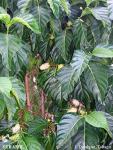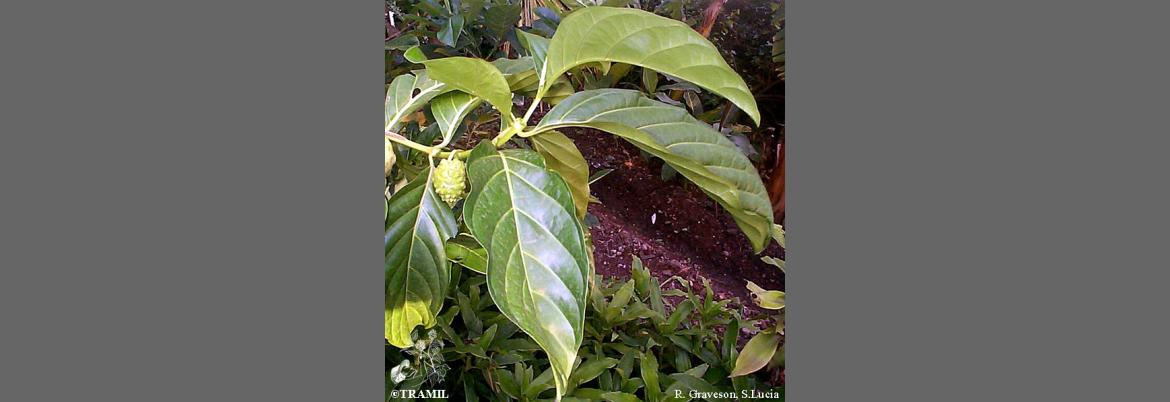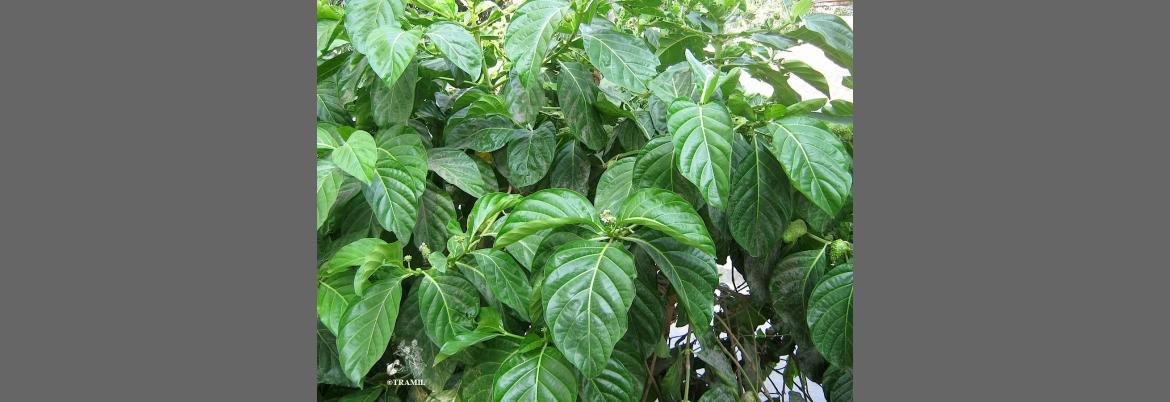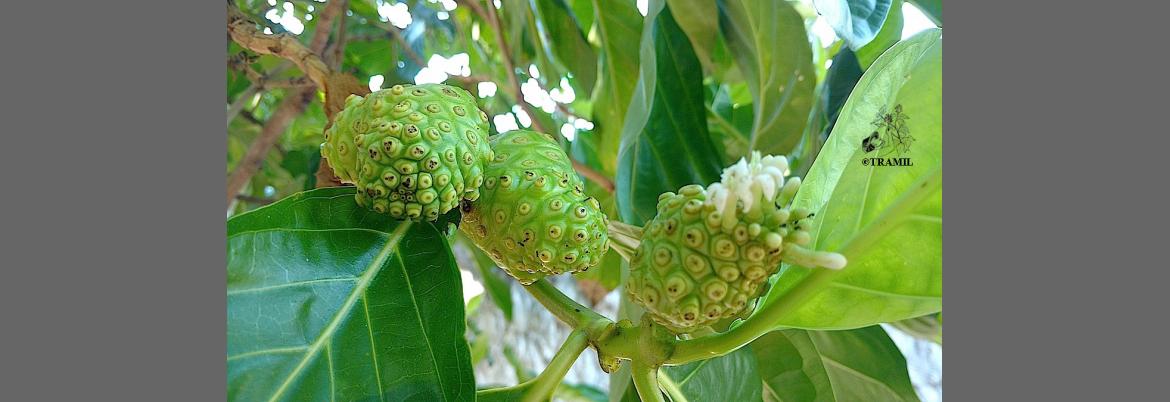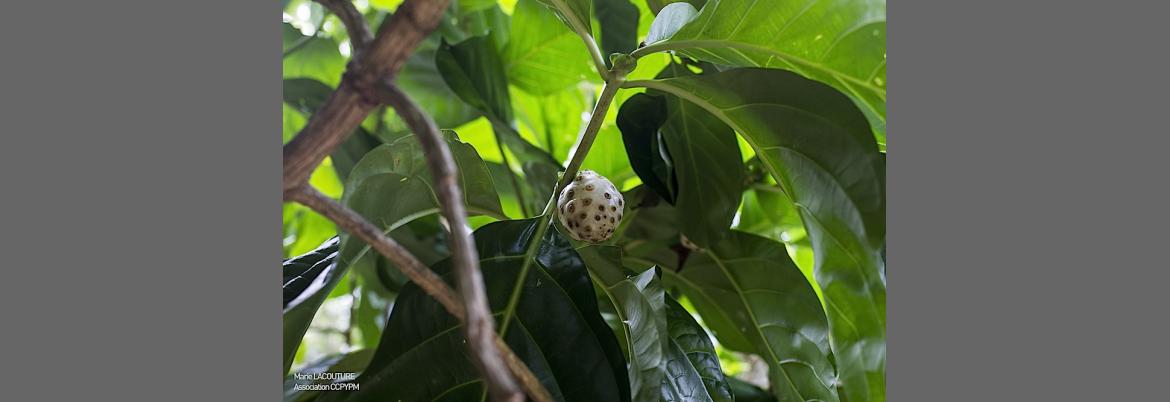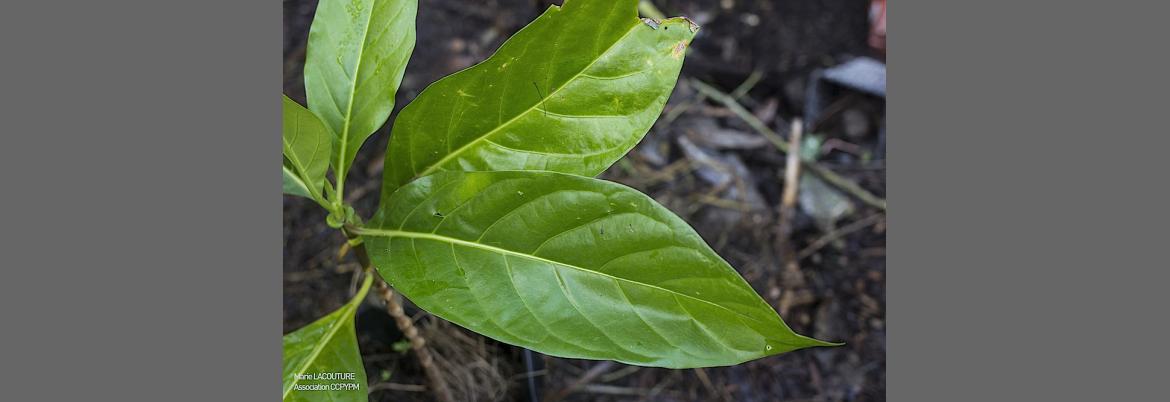1 WENIGER B, ROUZIER M, 1986 Enquête TRAMIL. Service Oecuménique d'Entraide SOE, Port au Prince, Haïti.
2 WHO, 1991 Guidelines for the assessment of herbal medicines. WHO/TRM/91.4. Programme on Traditional Medicines, WHO, Geneva, Switzerland.
3 LEISTNER E, 1973 Biosynthesis of morindone and alizarin in intact plants and cell suspension cultures of Morinda citrifolia. Phytochemistry 12:1669-1674.
4 INOUYE H, TAKEDA Y, NISHIMURA H, KANOMI A, OKUDA T, PUFF C, 1988 Chemotaxonomic studies of Rubiaceous plants containing iridoid glycosides. Phytochemistry27(8):2591-2598.
5 GRIFFITHS LA, 1959 On the distribution of gentisic acid in green plants. J Exp Biol 10(3):437-442.
6 AHMAD VU, BANO S, 1980 Isolation of ß-sitosterol and ursolic acid fromMorinda citrifolia L. J Chem Soc Pak 2(2):71.
7 MORON F, VICTORIA MC, PINEDO Z, 2004 Efecto del jugo del fruto de Morinda citrifolia en las contorsiones inducidas por ácido acético intraperitoneal en ratones. Informe TRAMIL. Laboratorio Central de Farmacología, Facultad de Ciencias Médicas “Dr. Salvador Allende”, La Habana, Cuba.
8 TAN GT, PEZZUTO JM, KINGHORN AD, HUGHES SH, 1991 Evaluation of natural products as inhibitors of human immunodeficiency virus type1 (HIV-1) reverse transcriptase. J Nat Prod 54(1):143-154.
9 Li RW, Myers SP, Leach DN, Lin GD, Leach G, 2003 A cross-cultural study: anti-inflammatory activity of Australian and Chinese plants. J Ethnopharmacol 85(1):25-32.
10 DHAWAN BN, PATNAIK GK, RASTOGI RP, SINGH KK, TANDON JS, 1977 Screening of Indian plants for biological activity. VI. Indian J Exp Biol 15:208-219.
11 Kusamran WR, Tepsuwan A, Kupradinun P, 1998 Antimutagenic and anticarcinogenic potentials of some Thai vegetables. Mutat Res 402(1/2):247-258.
12 RAJ RK, 1975 Screening of indigenous plants for anthelmintic action against human Ascaris lumbricoides. Part II. Indian J Physiol Pharmacol 19(1).
13 Sang S, Cheng X, Zhu N, Stark RE, Badmaev V, Ghai G, Rosen RT, Ho CT, 2001 Flavonol glycosides and novel iridoid glycoside from the leaves of Morinda citrifolia. J Agric Food Chem 49(9):4478-4481.
14 YOUNOS C, ROLLAND A, FLEURENTIN J, LANHERS MC, MISSLIN R, MORTIER F, 1990 Analgesic and behavioural effects of Morinda citrifolia. Planta Med 56(5):430-434.
15 NEGWER M, 1987 Organic chemical drugs and their synonyms (an international survey), 6th ed. Berlin, Germany: Akademie Verlag.
16 BUDAVARI S (Ed.), 2001 The Merck index: an encyclopedia of chemical, drugs, and biologicals. 30th ed. Whitehouse Station, USA: Merck & Co., Inc. p781.
17 NAKANISHI K, SASAKI SI, KIANG AK, GOH J, KAKISAWA H, OHASHI M, GOTO M, WATANABE JM, YOKOTANI H, MATSUMURA C, TOGASHI M, 1965 Phytochemical survey of Malaysian plants. Preliminary chemical and pharmacological screening. Chem Pharm Bull 13(7):882-890.
18 Mokkhasmit M, Swatdimongkol K, Satrawaha P, 1971 Study on toxicity of Thai medicinal plants. Bull Dept Med Sci 12(2/4):36-65.
19 Olmedo D, RODRIGUEZ N, ESPINOSA A, VASQUEZ Y, Gupta MP, 2005 Ensayo antimicrobiano de algunas especies con usos significativos TRAMIL-Centroamérica. Informe TRAMIL. Centro de Investigaciones Farmacognósticas de la Flora Panameña CIFLORPAN, Facultad de Farmacia, Universidad de Panamá, Panamá, Panamá.
20 LOPEZ M, MARTINEZ MJ, MOREJON Z, BOUCOURT E, FUENTES V, MORON F, 2005 Irritabilidad dérmica primaria de hoja fresca machacada de Morinda citrifolia L. Informe TRAMIL. Laboratorio Central de Farmacología, Facultad de Medicina “Dr. Salvador Allende”, Cerro, C. Habana, Cuba.
21 PAZOS L, COTO T, GONZALEZ S, 2006 Irritabilidad dérmica, piel sana en conejos, de hoja fresca machacada de Morinda citrifolia. Informe TRAMIL. Laboratorio de Ensayos Biológicos, LEBi, Universidad de Costa Rica, San Pedro, Costa Rica.
22 GarcIa-GONZÁLEZ M, BARBOZA CJ, 2005 Toxicidad aguda (3000 mg/kg) dosis repetida, en ratones, del extracto acuoso de hojas frescas de Morinda citrifolia. Informe TRAMIL.PRONAPLAMED. Depto de Fisiología, Escuela de Medicina, Universidad de Costa Rica, San Pedro, Costa Rica.
23 DUKE JA, ATCHLEY AA, 1986 Handbook of proximate analysis tables of higher plants. Boca Raton, USA: CRC Press. p110.
24 PAZOS L, COTO T, GONZALEZ S, 2006 Antiinflamatorio tópico, en ratones, del extracto acuoso del jugo de hojas de Morinda citrifolia. Informe TRAMIL.Laboratorio de Ensayos Biológicos, LEBi, Universidad de Costa Rica, San Pedro, Costa Rica.
25 FRIAS AI, GARCIA N, MOREJON Z, MORON F, VICTORIA MC, 2009 Efecto antiinflamatorio tópico de la decocción de hojas frescas de Morinda citrifolia L. (noni) en el edema de la oreja inducido por aceite de Croton en ratones. Trabajo TRAMIL. Laboratorio Central de Farmacología. Universidad de Ciencias Médicas de La Habana.
